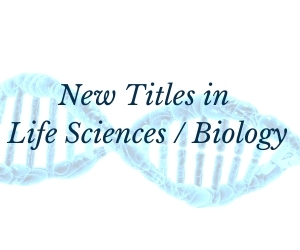This book is an authoritative monograph on the recent progresses in the chemistry of bioluminescence. It provides a comprehensive overview of the past and the latest developments in understanding the biochemical mechanisms of some 35 different types of luminous organisms, together with information helpful to students and researchers in an Appendix. It is the first and only book that provides chemical information on all currently known bioluminescence systems. Dr Shimomura is the leading practitioner in the field for the past half century, and is best known for his discovery of the jellyfish photoprotein aequorin and the green fluorescent protein. This book is the bible of bioluminescence, and is “a must read,” not only for the students who study bioluminescence but also for those who work in various aspects relating to bioluminescence. This book will be an important source of chemical knowledge on bioluminescence for a long period of time in future.
Fully revised since its publication in 2006, it now incorporates the most recent advances in the subject area. A new section on “Green Fluorescent Protein” has been added at the end of Chapter 4. It contains an extensive reference section.
Sample Chapter(s)
Introduction (73k)
Chapter 1: The Fireflies and Luminous Insects (787k)
Contents:
- The Fireflies and Luminous Insects:
- The Fireflies
- Phengodidae and Elateroidae
- Diptera
- Luminous Bacteria:
- Factors Required for Bioluminescence
- Bacterial Luciferase
- Long-chain Aldehyde
- Mechanism of Luminescence Reaction
- Assay of Luciferase Activity
- Quantum Yield of Long-chain Aldehydes
- In vivo Luminescence of Luminous Bacteria
- The Ostracod Cypridina (Vargula) and Other Luminous Crustaceans:
- The Ostracod Cypridina
- Euphausiids Euphausia pacifica and Meganyctiphanes Norvegica
- The Decapod Shrimp Oplophorus gracilirostris
- Copepoda
- The Jellyfish Aequorea and Other Luminous Coelenterates:
- The Hydrozoan Medusa Aequorea aequorea
- The Hydroid Obelia (Hydrozoan)
- The Hydrozoan Medusa Phialidium gregarium
- Other Bioluminescent Hydrozoans
- The Scyphozoans Pelagia and Periphylla
- The Anthozoan Renilla (Sea Pansy)
- The Ctenophores
- The Green Fluorescent Protein (GFP)
- The Coelenterazines:
- Discovery of Coelenterazine
- Occurrence of Coelenterazine
- Properties of Coelenterazine and Its Derivatives
- Chemi- and Bioluminescence Reactions of Coelenterazine
- Various Chemical Reactions of Coelenterazine
- Synthesis of Coelenterazines
- Coelenterazine Luciferases
- Luminous Mollusca:
- The Limpet Latia
- The Clam Pholas dactylus
- Luminous Squids (Cephalopoda)
- Annelida:
- The Tubeworm Chaetopterus variopedatus
- The Bermuda Fireworm Odontosyllis
- Luminous Earthworms (Oligochaeta)
- Polynoid Scaleworm Harmothoë lunulata
- The Polychaete Tomopteris
- Dinoflagellates and Other Protozoa:
- Radiolarians
- Dinoflagellates
- Luminous Fungi:
- An Overview on Fungal Bioluminescence
- Early Studies on the Biochemistry of Luminous Fungi
- Role of Superoxide in Fungal Luminescence
- Studies on Panellus stipticus
- Studies on Mycena citricolor
- Summary on the Chemistry of Fungal
- Other Luminous Organisms:
- Ophiuroidea: Brittle Stars
- Millipede Luminodesmus sequoiae (Diplopoda)
- Centipede Orphaneus brevilabiatus (Chilopoda)
- Hemicordata
- Tunicates (Phylum Chordata)
- The Luminous Fishes
Readership: Biologists, chemists, analytical chemists, biomedical chemists; students in biochemistry.























